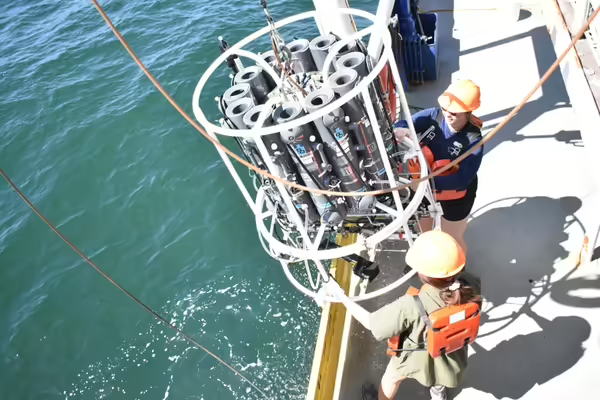
NOAA-supported scientists announced today that this year’s Gulf of Mexico “dead zone” — an area of low to no oxygen that can kill fish and marine life — is approximately 4,402 square miles, 21% smaller than estimates from early June and the 15th smallest measurement on record. This equates to roughly 2.8 million acres of habitat potentially unavailable to fish and bottom-dwelling species, a reduction of 30% from the previous year.
University of Illinois Extension partners with the Illinois Environmental Protection Agency and Illinois Department of Agriculture to implement the Illinois Nutrient Loss Reduction Strategy. Illinois is one of 12 states that have developed nutrient strategies to meet the goals of the U.S. EPA Gulf Hypoxia Action Plan. The Illinois NLRS goals are to reduce the nutrient pollution that leaves Illinois via the Mississippi River; and to improve the local water quality of streams, rivers, and lakes for Illinois residents.
Data from the survey is available online for the public.
Scientists at Louisiana State University and the Louisiana Universities Marine Consortium led the annual dead zone survey July 20-25 aboard research vessel Pelican. This annual measurement is a key metric that informs the collective efforts of the Mississippi River/Gulf of America Hypoxia Task Force, which has set a long-term goal of reducing the five-year average extent of the dead zone to fewer than 1,900 square miles by 2035.
"This year's significant reduction in the Gulf of America's 'dead zone' is an encouraging sign for the future of this area," said Laura Grimm, acting administrator of NOAA. "It highlights the dedication and impactful work of NOAA-supported scientists and partners, and serves as a testament to the effectiveness of collaborative efforts in supporting our U.S. fishermen, coastal communities, and vital marine ecosystems. We are proud of these achievements and remain committed to fostering the research and strategies that ensure the health and vitality of our oceans for generations to come."
Read the full release from the National Oceanic and Atmospheric Administration.
University of Illinois Extension develops educational programs, extends knowledge, and builds partnerships to support people, communities, and their environments as part of the state's land-grant institution. Extension serves as the leading public outreach effort for University of Illinois Urbana-Champaign and the College of Agricultural, Consumer and Environmental Sciences in all 102 Illinois counties through a network of 27 multi-county units and over 700 staff statewide. Extension’s mission is responsive to eight strategic priorities — community, economy, environment, food and agriculture, health, partnerships, technology and discovery, and workforce excellence — that are served through six program areas — 4-H youth development, agriculture and agribusiness, community and economic development, family and consumer science, integrated health disparities, and natural resources, environment, and energy.